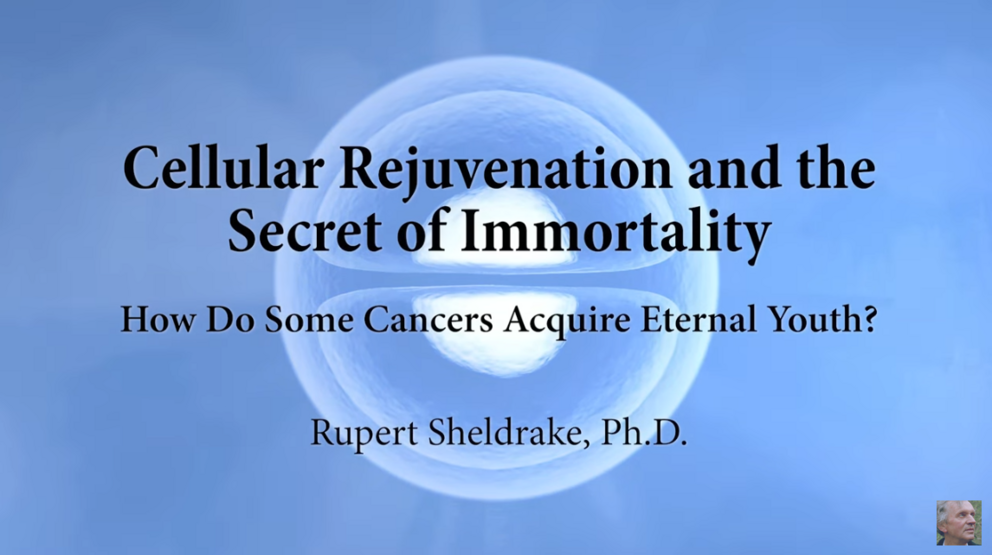Cellular Immortality - Rupert Sheldrake
Cellular Immortality, a New Theory of Senescence and Rejuvenation
Rupert proposed a new hypothesis of cellular rejuvenation in an article in Nature in 1974, and in 2023 published a review article entitled ‘Cellular Senescence, Rejuvenation and Potential Immortality’ in the Proceedings of the Royal Society B, summarising results of recent research, which support his hypothesis. In this talk he gives an overview of this hypothesis, which applies to cells of all kinds, including bacteria and yeasts as well as plants and animals, and he shows how it sheds new light on the nature of stem cells.
In mammals, embryonic stem cells have a special property that enables them to divide indefinitely without senescing and Rupert suggests that cancerous transformations involve the hijacking of this embryonic stem cell system. He suggests ways in which this hypothesis could be tested, and shows how it could lead to new approaches in cancer therapy – by blocking the rejuvenative system that cancers have acquired. If this system were inhibited, then cancer cells might senesce like most other somatic cells and become less virulent.
This is the second of a series of six talks on potential breakthroughs in the sciences released as an online course.
https://www.sheldrake.org/online-courses
References
____ Sheldrake, R. (1974). The ageing, growth and death of cells. Nature, 250, 381-385. https://www.sheldrake.org/ageing
____ Sheldrake, R. (2022) Cellular Senescence Rejuvenation and Potential Immortality. Proceeding of the Royal Society B, 289, 20212434 https://www.sheldrake.org/immortality
____ Nine open questions suggested by the cellular rejuvenation hypothesis, and ways of answering them empirically (Supplementary to the above paper in Proc. Royal Soc. B) https://rs.figshare.com/ndownloader/f...

